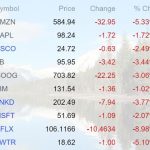
The US dollar has been on a roller coaster ride. Many have lost confidence in the underlying trend. An important prop for the dollar, namely the prospects for the Fed’s lift-off has been pushed out again, this time ostensibly due to the heightened volatility of the financial markets, apparently sparked by events in China.
The September Fed funds futures have nearly fully priced out the risk of a hike next month. The effective Fed funds have traded 14-15 bp this month, and the September Fed funds contract implies an average effective rate of 17.5 bp next month.
We continue to believe that the main driver of this third significant dollar rally since the end of Bretton Woods is the divergence of the trajectory of monetary policy between the US (and UK) and nearly all the other high income countries, and many emerging markets, including China. There are a number of cross-currents, and other considerations, including market positioning, use of euro and yen for funding purposes, and hedging flows that at times may obscure or even reverse (technical correction) the underlying trend.
Nevertheless, we expect the divergence theme to gain more traction over time. The Federal Reserve will raise rates at some juncture and not only will the ECB and BOJ continue to ease for at least the next 12 months, but there is risk that the central bank balance sheet exercise lasts even longer. The ECB’s staff, which will update its forecasts in the week ahead, is likely to shave both its growth and inflation forecasts at the September 3 central bank meeting.
The Dollar Index was slammed to its lowest level since January in the market panic at the start of last week. It overshot the minimum objective of the double top pattern we noted (~94.30). It rebounded and on Thursday had retraced nearly 61.8% of the decline since the August 7 (~98.33). The trend line drawn off that high and the August 19 high (~97.08) comes in near 95.80 on Monday and falls to about 95.15 by the end of the week. A move above 96.40 signal a return of the 98.00-98.30 area.
The panic saw the euro reach almost $1.1715 at the start of last week. The subsequent sell-off saw it shed more than nickel. The euro settled on its lows for the week, leaving a potential shooting star candlestick formation on the weekly charts. The break of $1.12 creates scope for another half cent of declines but pushing the euro below the $1.1130 area may require fresh fundamental incentives, possibly in the form of more confidence that the Fed is still on track to hike rates next month, or that the ECB is particularly dovish. On the upside, the $1.1280-$1.1310 band should limit euro gains if the euro bears who had been squeezed out of their shorts are going to re-establish.
Switzerland unexpectedly reported that its economy expanded in Q2. The consensus was expected the second consecutive quarterly contraction. That helped stall the dollar’s upside momentum. The CHF0.9680 is a potent block now to additional dollar gain, though if it is overcome, the next target is near CHF0.9800. Support is seen near CHF0.9500. Support for the euro is pegged at CHF1.0750 and then CHF1.0700. A break of CHF1.0680 would mark a significant technical deterioration.













Leave A Comment